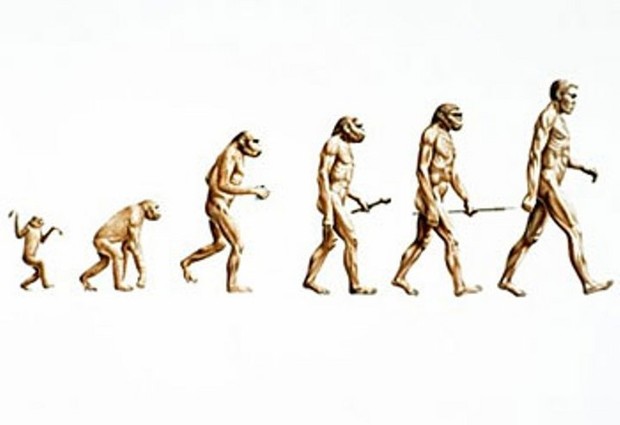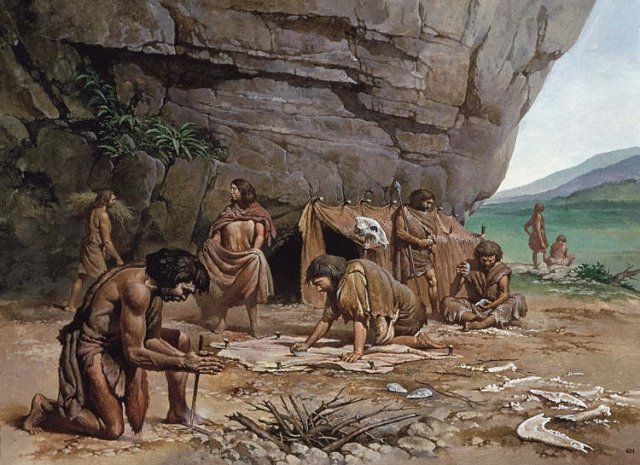Question
Gramps,
What does the church say about prehistoric man (caveman) and his relationship to Adam? Thanks
Bobby
Answer
Dear Bobby,
The exploration of humanity’s origins has long captivated the minds of theologians, scientists, and philosophers. Among the many narratives about human beginnings, the story of Adam stands out prominently in the theology of The Church of Jesus Christ of Latter-day Saints. Adam is not merely a figure in ancient scripture but the first man created in the image of God.
According to The Church of Jesus Christ of Latter-day Saints, the creation of Adam represents a twofold process: a spiritual creation that precedes his physical manifestation. The First Presidency of the Church has articulated that “God created man in his own image” (Genesis 1:27), indicating that Adam was created first as a spirit. This foundational belief emphasizes that all human beings existed in a spiritual form before their earthly lives, providing a clear distinction between Adam and prehistoric beings, who may not share this divine lineage.
The doctrine of creation asserts that Adam is “the first man of all men” (Moses 1:34), serving as the progenitor of the human race. While some scientific theories propose that humanity evolved from lower forms of life, the Church teaches that such ideas are merely speculative. Instead, revelation affirms that Adam was the first true human being, created in God’s image and endowed with divine attributes.
The notion of Adam as the primal parent carries significant theological weight within the Church. The teachings emphasize that all humans are created in God’s image, reflecting not only physical characteristics but also spiritual attributes. This divine connection elevates humanity’s status among God’s creations, suggesting a unique role in the divine plan. Adam’s creation is seen as a deliberate act by God, underscoring the belief that every human being has a purpose and a potential for spiritual evolution.
The Church’s teachings also highlight the concept of preexistence, positing that Adam, like all humanity, existed as a spirit before coming to Earth. This belief provides clarity regarding the origins of mankind and affirms that our earthly existence is part of a much larger divine narrative.
While The Church of Jesus Christ of Latter-day Saints provides clear doctrinal positions regarding Adam, the scientific community offers varying perspectives on human origins. Some scientists argue that evidence from archaeology and paleontology indicates that modern humans evolved from earlier hominid species. This viewpoint has led to discussions about how the existence of prehistoric men interacts with the scriptural account of Adam.
A notable perspective is presented by NT Wright, who discusses the theological implications of a historical Adam in the context of scientific understandings of human origins. He suggests that the authority of Scripture should be understood not merely as a literal historical account but as a transformative revelation from God. This perspective encourages believers to engage with both faith and science to find a harmonious understanding of humanity’s beginnings.
Some scholars have explored the idea that Adam may represent a significant figure among a subgroup of early Homo sapiens rather than the first of all humans. This interpretation accommodates evidence from archaeological findings regarding prehistoric humans while maintaining the Church’s core beliefs about Adam’s divine creation. This view asserts that Adam’s role as the progenitor of humanity does not negate the existence of earlier humanoid species, thereby allowing for a reconciliatory approach to faith and science. (Perspectives on “In Quest of the Historical Adam,” by William Lane Craig)
The teachings of The Church of Jesus Christ of Latter-day Saints emphasize that humans are endowed with divine attributes that set them apart from other creations. This notion asserts that each individual has the potential for spiritual growth and progression, rooted in their divine heritage as children of God. The understanding of Adam’s creation in the image of God underscores the inherent worth of every human being, regardless of their biological origins.
The Church teaches that all beings were created after their kind, with the notable exception of Adam, who is viewed as the direct offspring of God. This belief reinforces the idea that humanity has a unique role within the cosmos, tasked with stewardship over the Earth and an obligation to seek spiritual enlightenment.
In conclusion, the relationship between prehistoric men and Adam is a complex tapestry woven from threads of theology, science, and revelation. The Church of Jesus Christ of Latter-day Saints teaches that Adam is the first man, created in the image of God, and serves as the primal parent of humanity. While scientific perspectives may present alternative views on human origins, the Church’s emphasis on spiritual creation and the divine nature of humanity provides a foundation for understanding our place in the universe.
As we navigate the intricate dialogue between faith and science, it is essential to recognize the unique role of humanity in God’s plan and the divine connection that binds us all. Ultimately, the teachings regarding Adam invite us to reflect on our own spiritual journeys and the legacies we leave for future generations.
Gramps







